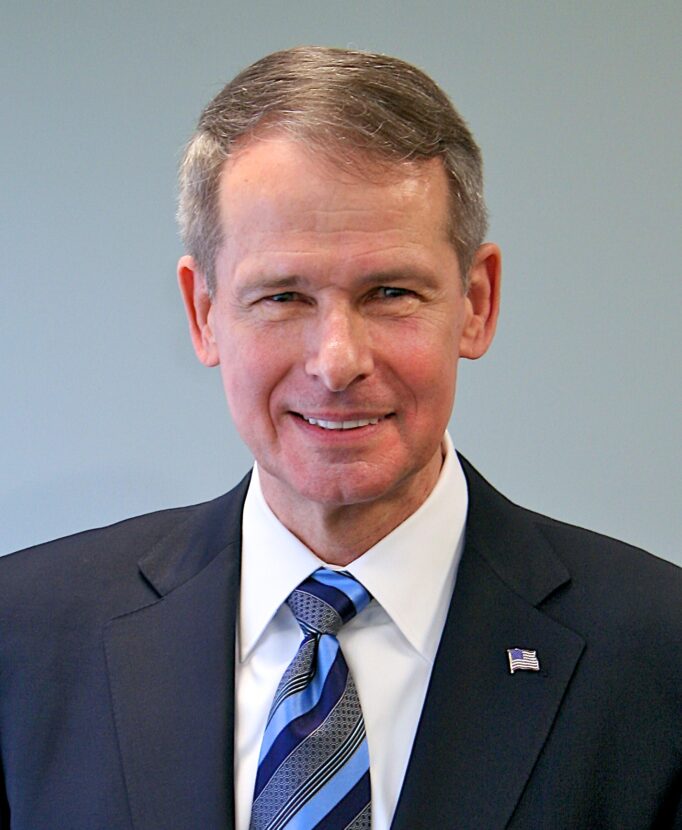-
Leading Up
While we all understand that the boss has a responsibility to lead an organization’s employees, rarely do we focus on the employees’ responsibility to lead the boss. In addition to mentoring and motivating their subordinates, truly effective leaders value the perspective of all members of the team and encourage subordinates to lead up – to share information up the chain of command in a way that helps an organization’s leaders make timely, accurate decisions.
A master at serving many masters, Pace demonstrates how to think through the consequences of multiple competing priorities, see the bigger picture and communicate that strategic analysis up the chain in a way that is clear, precise and useful. In fact, Michael Useem, Director of the Center for Leadership and Change Management at the Wharton School devotes a chapter to Pace in his book, Leading Up, highlighting Pace’s efforts to reconcile the conflicting priorities of six bosses by keeping them well informed and challenging their instructions when necessary.
Amid today’s fragile global economy, corporate restructuring is commonplace, as managers and leaders are continuously challenged to do more with less. In this inspiring discussion, General Pace shares insights and personal examples about leading in both directions, to include:
- Embracing the job you didn’t want
- Determining who ‘owns’ a decision – and then making it!
- Navigating between the organization’s vision and your own personal goals
- Speaking up in a way that challenges assumptions but not authority
- Listening to subordinates and encouraging differing points of view
- Checking your moral compass and preparing for ethical decisions before they arrive
-
Cyber Security – Global, National, Organizational and Personal Vulnerabilities
Cyber defense, cyber attack, cyber warfare – the terms are prevalent and yet, what do they really mean to you and your organization? Little is understood about this unique and ubiquitous threat to our national and personal security. Yet defending the homeland means more than protecting our airports, railheads, nuclear plants and government buildings. Power grids, banking data, telecommunications and personal identity records are all at risk.
The US Cyber Command has budgeted billions of dollars this year for cyber defense systems – how much is enough to protect your organization? If your business depends even in part on computers, you are vulnerable to a cyber attack from hackers, criminal elements, even state-sponsored terrorists.
Estonia, the CIA and Google have one thing in common – they were breached by hackers. The cost in restoring lost data is significant, but the cost of restoring lost confidence is immeasurable. Is your organization prepared to thwart a cyber attack?
Even as individuals, we are not immune. For instance, PayPal’s response to Wikileaks’ unauthorized release of classified documents in Sweden prompted hackers to disable PayPal temporarily preventing online purchases.
Combining his vast military experience with unprecedented access to state of the art IT security expertise, Gen. Peter Pace explains this invisible threat and what nations, businesses and individuals can do to protect themselves.
-
Non-Political Advice in a Very Political Environment
A key ingredient to our system of government is civilian control of our military. As Chairman of the Joint Chiefs of Staff, General Pace was responsible for providing his unvarnished insights and best military advice to the Commander in Chief, the Secretary of Defense, the National Security Council, the Homeland Security Council and when asked, the Congress of the United States. In a discussion that transcends any partisan political debate, General Pace explains the chain of command and the value of this civil/military relationship, demonstrating how non-political advice plays an important role in our government process.
Using real world examples from perspective gained in senior most military leadership roles, General Pace adds valuable insight on how to approach challenges that are familiar to any organization. From navigating multiple military and national security proposals in response to the latest headlines, to the professional working relationship between the President, the National Security Council, the Secretary of Defense and the Chairman of the Joint Chiefs of Staff, General Pace shares “a day in the life” view, detailing what it’s like to provide strategic guidance on an organization with 2.4 million members and a budget in excess of $700 billion dollars. Pace describes the DOD budget process, how priorities are addressed and the impact of shortfalls or cost overruns. He makes recommendations to change the interagency process in order to more effectively and efficiently carry out the orders of the Commander in Chief.
How does this apply to your business?
- Crisis du jour—how will your organization hold up in the wake of bad news? Do you have a crisis response plan that addresses the media attention as well as the longer term implications for the company’s culture and your ability to weather the storm?
- Departmental rivalries – how to use leadership’s clear vision to navigate beyond conflicting interests and stove piped perspectives; how to work inside a process while still presenting your case for change.
- A day in the life of the Chairman/CEO — the importance of time, mentors, access, meetings, responsibilities.
- Prioritizing for budget shortfalls – The need to address competing priorities against a shrinking budget and to be part of the solution, not just part of the discussion.
-
Artificial Intelligence
Artificial intelligence is a term that both intrigues and alarms us, as we struggle to understand AI’s capabilities, opportunities, and risks. Artificial Intelligence – or machine learning – is no longer the stuff of science fiction movies. Its application in government agencies, corporate workspaces, and our own homes makes this technology very real. Siri and Alexa answer our questions, and over time, begin to anticipate our requests – even feed us ideas. Businesses use AI to analyze news articles or Twitter feeds that mention their products, collecting data to help adjust marketing or product development. Government agencies apply AI to make best use of limited resources.
AI is a technology – not a solution. Algorithms, math, and statistical analysis can be applied to complex problems to identify trends and patterns, making logical projections or forecasts, which empower us to make timely and informed decisions impacting our daily lives, the market economy, and national security. But who determines policy, and how do we ensure those rules are followed to safeguard intellectual property, personal privacy, and basic safety?
Drawing on his unparalleled access to IT innovations and expertise, combined with decades of experience in decision-making in the national security arena, General Pace shares what organizations should consider to take advantage of Artificial Intelligence, while assessing and mitigating its inherent risks.

